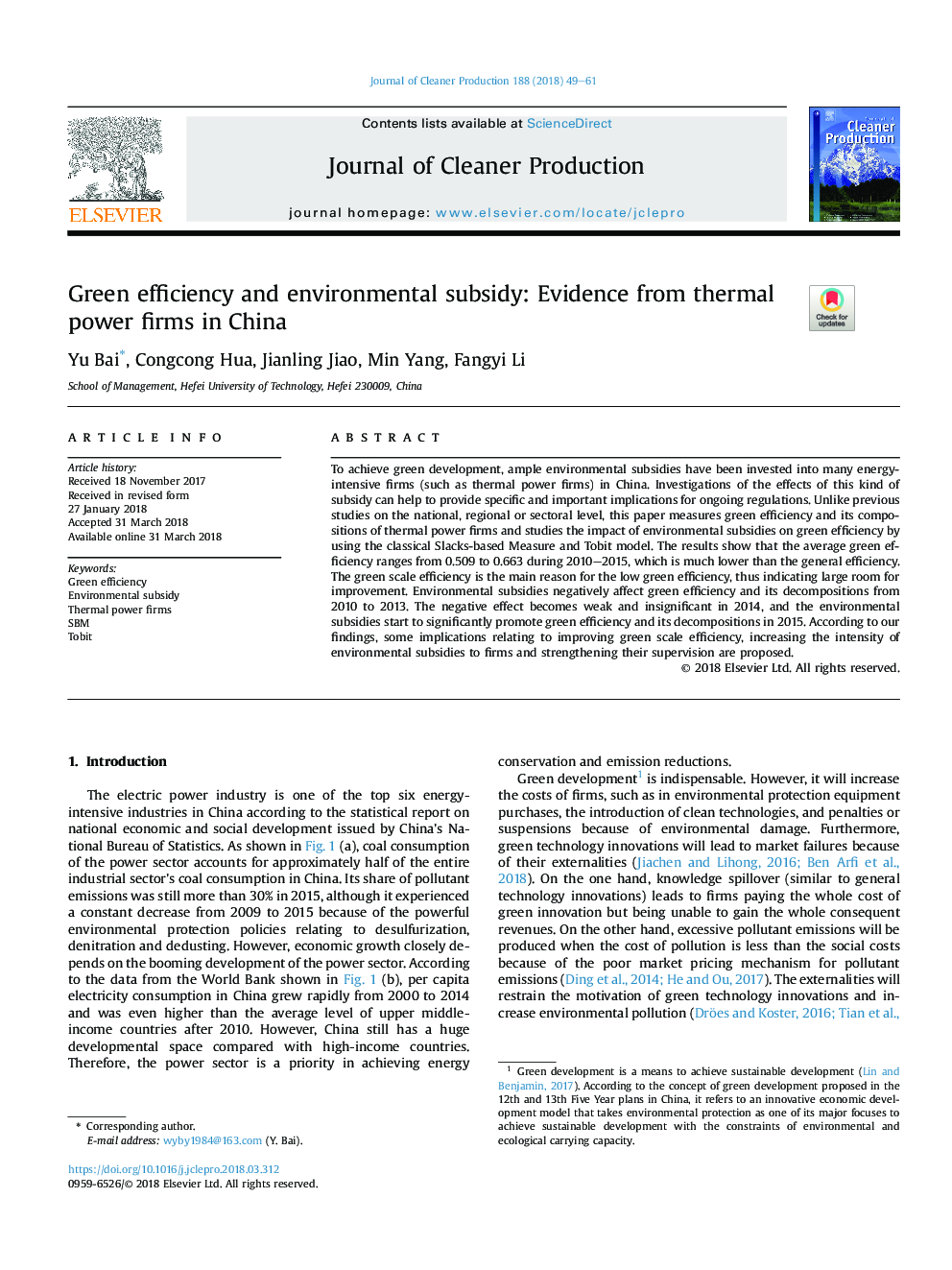| Article ID | Journal | Published Year | Pages | File Type |
|---|---|---|---|---|
| 8095375 | Journal of Cleaner Production | 2018 | 13 Pages |
Abstract
To achieve green development, ample environmental subsidies have been invested into many energy-intensive firms (such as thermal power firms) in China. Investigations of the effects of this kind of subsidy can help to provide specific and important implications for ongoing regulations. Unlike previous studies on the national, regional or sectoral level, this paper measures green efficiency and its compositions of thermal power firms and studies the impact of environmental subsidies on green efficiency by using the classical Slacks-based Measure and Tobit model. The results show that the average green efficiency ranges from 0.509 to 0.663 during 2010-2015, which is much lower than the general efficiency. The green scale efficiency is the main reason for the low green efficiency, thus indicating large room for improvement. Environmental subsidies negatively affect green efficiency and its decompositions from 2010 to 2013. The negative effect becomes weak and insignificant in 2014, and the environmental subsidies start to significantly promote green efficiency and its decompositions in 2015. According to our findings, some implications relating to improving green scale efficiency, increasing the intensity of environmental subsidies to firms and strengthening their supervision are proposed.
Related Topics
Physical Sciences and Engineering
Energy
Renewable Energy, Sustainability and the Environment
Authors
Yu Bai, Congcong Hua, Jianling Jiao, Min Yang, Fangyi Li,
